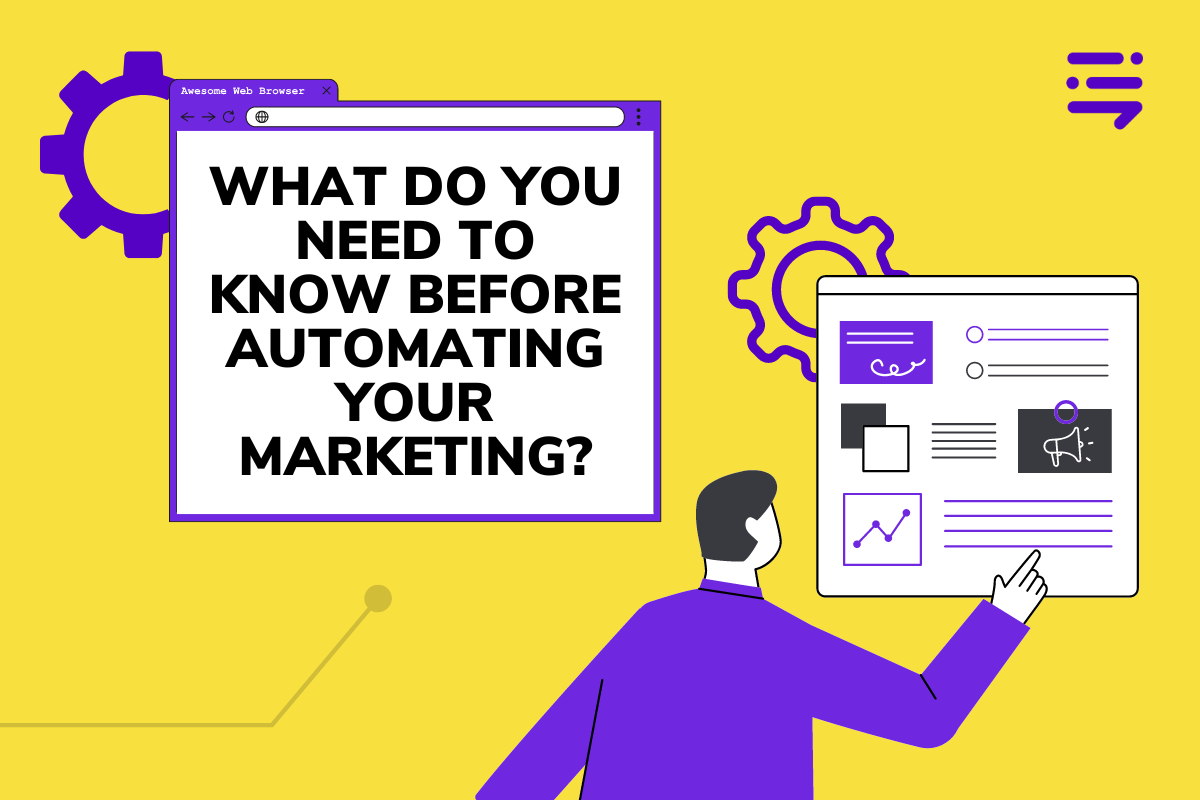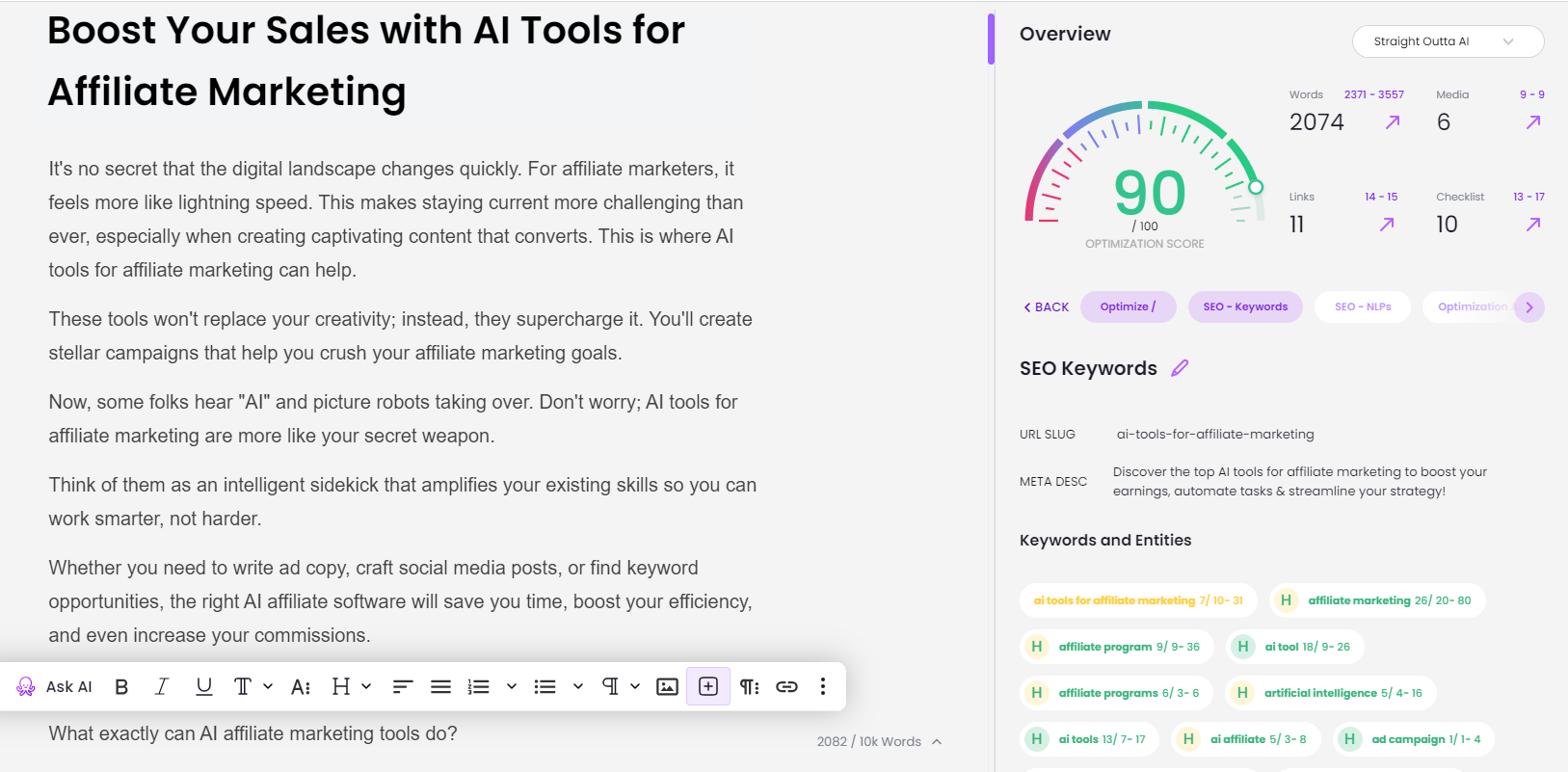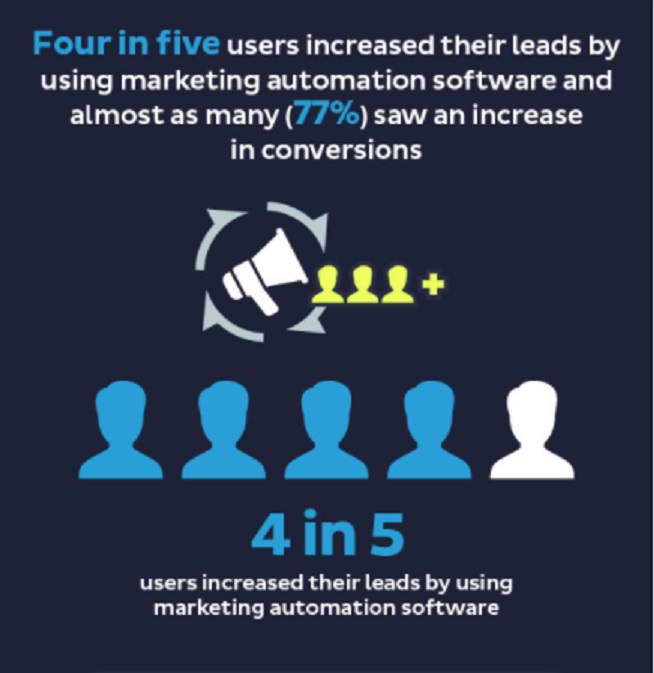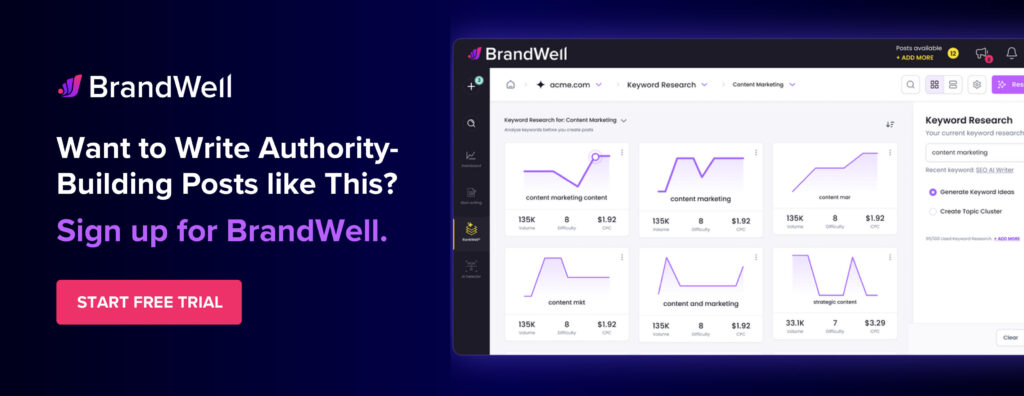Discover top guides, trends, tips and expertise from AIO Writers
What Do You Need to Know Before Automating Your Marketing?
Julia McCoy
Tuesday, 28th Feb 2023
According to HubSpot’s State of Marketing report, 76% of companies are already using marketing automation, and 26% of those that are not are planning to use it. Are you also considering automating your marketing, but don’t know where to start?
What do you need to know before automating your marketing?
Before taking the leap into marketing automation, it’s important to know your goals, analyze your current marketing program, and choose the right marketing automation solutions to build a successful marketing automation strategy that delivers measurable results.
This blog post will explore what do you need to know before automating your marketing and going full speed on your campaigns.
Is it Time to Embrace Marketing Automation?
Day after day, you are swamped with tedious, repetitive tasks that come with running a marketing campaign. If you are feeling overwhelmed, then maybe it’s time to embrace marketing automation. Automating certain processes can save you time and energy while improving efficiency.
What is Marketing Automation?
Marketing automation refers to software tools or platforms that are designed to automate certain marketing activities such as email campaigns, customer segmentation, lead scoring, and more. It allows you to focus on more strategic tasks instead of draining resources on mundane ones.
Benefits of Using Marketing Automation
There are many benefits associated with using marketing automation.
- Increased Efficiency: By automating certain processes like customer segmentation or lead scoring, businesses can increase their efficiency and better manage workloads.
- Improved Customer Experience: With automated processes in place, customers will have an easier time navigating your website or app because they won’t have to wait around for someone to help them find what they need. Automated emails also keep customers informed about new products or services without your marketing staff having to manually send out messages each time something changes.
- Cost Savings: Investing in marketing automation tools may seem expensive at first but it pays off in the long run as businesses don’t have to hire additional people for manual tasks.
A 2022 Capterra survey showed that 82% of marketers think AI-generated content is just as good or better than human-generated content. Also, 77% of the respondents believe AI is effective in accomplishing marketing objectives, while 49% observed that AI is highly successful at writing easy-to-read text.
With an AI content marketing automation platform like BrandWell, you can get your first draft within five minutes instead of five hours! Just a few tweaks here and there by your human editor and you’re ready to publish.
Here’s what a long-form blog post written by BrandWell looks like:


What Do You Need to Know Before Automating Your Marketing?
First, you must set goals. Why are you investing in automation? What do you want to accomplish by implementing marketing automation?
Identify Your Target Audience
To ensure that you’re reaching the right people with the right message, it’s critical to identify who you want to reach. Consider factors such as age range, gender, location, interests, or hobbies when narrowing down who should be included in your target audience. Once you have identified them, create content specifically tailored to their needs and interests.
Define Your Objectives
What do you hope to achieve through automation? Are you looking for increased brand awareness or more leads? Set measurable goals so you can track progress and make adjustments if needed.
Set a Budget
Automation can be expensive so it is important to determine how much money you can realistically allocate toward this effort. Research different marketing automation solutions available and compare the features offered versus the cost before making a final decision.
It’s important to understand your goals before automating your marketing so that you can maximize the potential of each strategy and get the best return on investment. Now, let’s look at how to analyze your current marketing efforts in order to determine what changes need to be made for a successful automation process.
Analyze Your Current Marketing Efforts
Before implementing marketing automation, look at your current marketing program and see what’s working and what isn’t. This allows you to identify areas of improvement and opportunities for growth.
Assess Your Existing Strategies
Take a look at the campaigns you’ve already launched to determine if they are achieving their desired goals. How successful has each strategy been so far? If any particular campaign hasn’t performed up to expectations, make note of it so that you can make adjustments once you have your marketing automation tools in place.
Evaluate Your Results and Performance Metrics
Analyze data from past campaigns such as website visits or email open rates to understand how customers interact with your brand online. This will help you determine which channels are most effective for reaching potential customers and allow you to focus on those when creating future campaigns.
Once you have a clear picture of your current efforts, it’s time to choose the most effective marketing automation tools that will help you reach your goals.
Key Takeaway: When automating your marketing, take the time to analyze existing strategies and evaluate performance metrics. This will help you identify areas of improvement and focus on channels that are most effective for reaching potential customers.

Choose the Right Automation Platforms and Tools
When choosing marketing software, consider ease of use, cost, and marketing automation features. Test out different platforms before committing to ensure they can deliver what you need.
Start by researching available solutions and services in the market. Read reviews from other users to get an honest opinion on product performance. Make sure that the platform offers marketing automation features that can support your marketing processes.
Ease of use is also key when selecting an automation platform. If it’s too complicated, then it’s probably just a waste of time. Make sure your marketing team can quickly learn how to use the program without having to call customer support all the time.
If your budget is tight, then the cost of the app is an important consideration when planning to automate your marketing processes. Expect to pay more for advanced features, but if they are worth it then go for it!
Rather than relying solely on third-party review, let your marketing team test out different options so you can see how the app works in real-life applications.
Once you have chosen a marketing automation platform, you can start integrating your marketing activities.
Key Takeaway: When selecting automation software, consider ease of use, features, and cost before making a decision.
Develop an Automated Marketing Strategy
How to create an automation strategy that works for your business?
Create Relevant Content for Each Stage of the Buyer’s Journey
To maximize engagement with potential customers, it is important to create content tailored to each stage of the buyer’s journey. This could include blog posts or videos about topics that interest them.
For example, if someone is in the awareness stage of their journey, they may need more educational content about what services or products are available on the market. But a customer who is already in the decision-making phase may need more detailed product information before they decide to buy.
Personalize to Increase Engagement and Conversion Rates
Personalization techniques such as dynamic content or automated emails can increase engagement rates by creating a special connection with your customers.
Automate Outreach Tasks
Automating processes such as email marketing campaigns or social media postings can help save time on manual tasks while still delivering high-quality results. With tools like Hootsuite or MailChimp, you can send multiple emails and social media posts in one go without having to log into each account.
Key Takeaway: Automating processes such as email campaigns and social media postings can save time, while personalization techniques like dynamic content can increase customer engagement and conversion rates.
Monitor and Measure Results Regularly
Tracking performance metrics is essential to gauge the success of your campaigns. Metrics such as open rates, click-through rates, and conversions can provide valuable insights into how well your automation strategy is working. By monitoring these results regularly, you can optimize strategies based on data analysis.
Similarly, if there’s a low conversion rate for an automated workflow process, then this could mean that there are too many steps involved or personalization is lacking.
If users are having difficulty navigating through your website or completing tasks, then this could affect overall engagement levels and lead to lower conversion rates.
Regularly monitoring user feedback can help identify areas where improvements need to be made to enhance customer satisfaction and increase conversions.
FAQs – What Do You Need to Know Before Automating Your Marketing?
What do I need to know about marketing automation?
Effective marketing automation takes away human involvement from repetitive tasks such as email marketing, social media posting, and even ad campaigns. This helps you accomplish more projects while improving the customer experience.
What are some best practices regarding marketing automation?
- Keep marketing analysis and lead scoring simple.
- Map your lead flow.
- Know the buyer’s journey.
- Create your buyer personas.
- Create engaging content.
- Consider email reputability.
- Effectively capture leads by limiting distractions and avoiding lengthy processes.
What are the key features of marketing automation software?
- Lead Management.
- Email Campaigns.
- Social Marketing.
- Real-time Alerts.
- Basic Organized Workflow.
- Trigger Responses.
- Customized Templates.
- Personalized Messaging.
Conclusion
What do you need to know before automating your marketing?
Marketing automation saves time and resources while allowing you to reach a wider audience – but only if you do it correctly.
Know your goals, analyze your current marketing program, and choose the right marketing automation software to build a successful marketing automation strategy that delivers great results.
Do some research on what you need to know before automating your marketing to make your investment worthwhile.

UNLOCK YOUR POTENTIAL
Long Headline that highlights Value Proposition of Lead Magnet
Grab a front row seat to our video masterclasses, interviews, case studies, tutorials, and guides.



